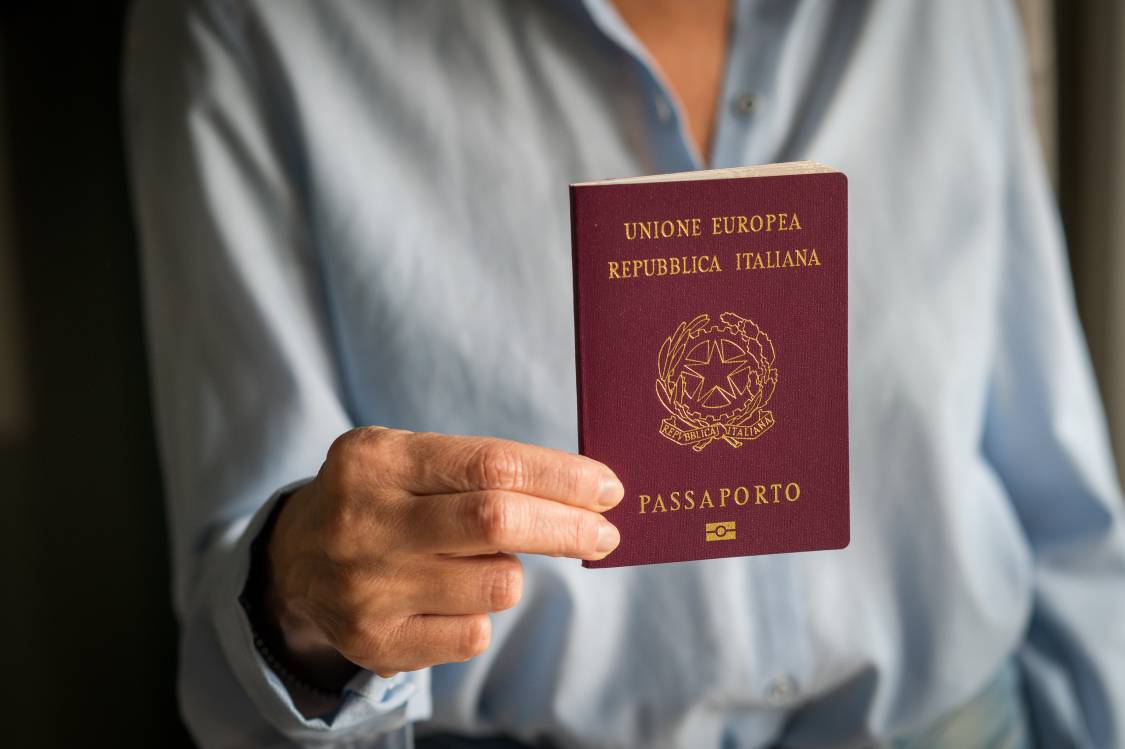Thursday, 11 September 2025
Italian Citizenship 1861: a legal and historical guide
March 17, 1861 marks the start of the modern Italian state. On this date, Italy unified under King Victor Emmanuel II, and its citizens from the old kingdoms became Italian citizenship automatically. There were no Italian citizens prior to Italian unification, so only those alive on or after this date can be considered the oldest Italian ancestor for citizenship claims. This moment remains the foundation for today’s citizenship by descent rules.
If you’re tracing eligibility for Italian ancestry, everything starts with this date. Your qualifying ancestor must have been alive on or after March 17, 1861.
Italian citizenship law has evolved over time. The first civil code came in 1865, followed by major changes in 1912, 1948, and later. The 1865 Civil Code is retroactive to March 17, 1861, ensuring that citizenship rules applied from the unification of Italy. The Italian ministry has issued various decree laws since unification, shaping citizenship eligibility and the conditions for descendants of Italian emigrants. Each update introduced new rules about who qualified and how citizenship could be passed on.
Legal foundations from 1861
When the Kingdom of Italy formed, citizenship rules were not clearly spelled out. People who lived within the new borders became citizens automatically. No formal application process existed as residence was enough.
The early unified territories included Piedmont-Sardinia, Lombardy, Tuscany, Emilia-Romagna, and parts of the Papal States. Over time, other regions joined, and Italian law adjusted to include their populations.
The 1912 Citizenship Law
The first real citizenship law arrived in 1912. Known as Law 555, it set down principles that still shape Italian nationality today. This law also allowed descendants of Italian ancestors to claim citizenship, establishing a framework for citizenship by descent. Eligibility to claim citizenship depends on having an Italian born ancestor or Italian born ancestors, and may also depend on whether the ancestor retained Italian citizenship after naturalization.
Key points:
- Citizenship passed through bloodline (jure sanguinis), not by place of birth.
- Foreigners could naturalize and become Italian citizens.
- A woman’s citizenship followed her husband’s status.
- Rules were set for how citizenship could be gained or lost, including the ability to lost Italian citizenship if an Italian citizen naturalized in another country or under specific historical rules prior to certain dates.
The gender rules were strict. Women could not pass citizenship to their children, and their status changed if they married a foreigner. Italian women married to foreign men and foreign women who married Italian men prior to April 27, 1983, were subject to different rules regarding citizenship transmission. The 1948 law was not retroactive, meaning it only applied to children born after January 1, 1948.

The 1948 Constitution and later changes
Italy became a republic in 1946, and its 1948 Constitution granted women the right to pass citizenship to children born after January 1, 1948. On this date, women officially gained the right to transmit Italian citizenship to their children, marking a significant step toward gender equality in citizenship laws. This change ensured that children born to Italian mothers could claim citizenship, aligning with broader societal shifts toward gender equality. After 1948, having one qualifying Italian parent or her Italian citizenship was sufficient for citizenship transmission.
In 1992, Law No. 91 allowed Italian dual citizenship, removing the risk of losing Italian nationality when becoming a citizen elsewhere. This law also introduced conditions under which dual citizenship could be maintained, reflecting Italy’s evolving approach to nationality.
Eligibility for Italian Citizenship by descent
To claim citizenship by descent (jure sanguinis), you must prove a direct, unbroken line from an Italian ancestor who was alive on or after March 17, 1861. You must also qualify for Italian passport eligibility by demonstrating that your ancestors continued to hold Italian citizenship through each generation. This process is based on the legal concept of Italian citizenship jure sanguinis (also known as Italian citizenship jus sanguinis), which means that a jus sanguinis citizenship application is required for Italian descendants or those of Italian descent seeking to obtain Italian citizenship. There is no generational limit on claiming Italian citizenship through descent, provided the ancestor meets other eligibility requirements. For applications submitted by 27 March 2025, there is no generational limit on claiming Italian citizenship by descent after the confirmed birthright, according to the current decree law.
Key dates that affect eligibility
- March 17, 1861 – Ancestor must have been alive on or after this date.
- July 1, 1912 – If your ancestor naturalized in another country before this date, you can’t claim through them.
- January 1, 1948 – Before this date, you can only claim through your father. After this date, you can claim through either parent, depending on the citizenship status of his or her parents at the child’s birth.
- March 2025 changes – Claims are now limited to parents or grandparents born in Italy. The eligibility rules established in the Tajani Decree specify that citizenship will no longer be automatically granted to all descendants. This change was introduced by Italian government decree law that redefined the requirements for acquiring Italian citizenship by descent.
Eligibility for Italian citizenship by descent may also depend on the circumstances of the child’s birth and the citizenship status of family members, such as whether the child born was to Italian parents or if the child’s birth occurred while the parents still held Italian citizenship.
Proving your ancestry
You’ll need records for every generation from your Italian ancestor down to you. If you’re applying based on family ties, you may also be interested in information about an Italian residence permit for family reasons. Required documents typically include:
- Long-form birth certificates
- Marriage certificates
- Death certificates (if applicable)
- Naturalization records
Each parent or adoptive parent in the line must have been an Italian citizen when their child was born, meaning adopted children are also eligible if the adoptive parent was an Italian citizen. Apostilles and certified translations into Italian are required. Italian citizenship by descent requires that applicants submit all necessary original documents legalized and translated into Italian. If your Italian ancestor naturalized in a foreign country, you may need to provide proof of their foreign nationality or non Italian citizenship at the time, as this can affect eligibility.
Maternal and Paternal lines
Paternal line rules:
- No generation limit (except under 2025 restrictions).
- Father must have been an Italian citizen at the time of birth.
- Applies to all birth dates.
Maternal line rules:
- Only applies to children born after January 1, 1948.
- Mother must have been an Italian citizen at the time of birth.
Before 1948, Italian mothers could not pass citizenship to their children, but after this date, both an Italian born female ancestor or a foreign born mother who acquired Italian citizenship (such as through marriage to an Italian man before April 27, 1983) could transmit her Italian citizenship to her children.
Marriage to an Italian can also lead to citizenship, but the process and requirements depend on whether the marriage took place before or after April 27, 1983. Prior to this date, foreign women who married Italian men automatically acquired Italian citizenship. Conversely, Italian women who married foreign nationals neither automatically lost nor gained citizenship, and Italian husbands were not subject to the same rules.

Breaking the Citizenship chain
You lose eligibility if:
- Your ancestor naturalized before July 1, 1912.
- Your ancestor naturalized before their child reached legal Italian adulthood (21 before 1975, 18 after), as Italian citizenship could be lost automatically for the child in this case.
- Someone in the direct line renounced Italian citizenship.
You remain eligible if:
- Your ancestors naturalized after their child became an adult.
- Your ancestor never became a foreign citizen.
- All generations retained Italian citizenship. If you are an Italian citizen born in a jus soli country, there may be additional considerations for citizenship retention, and eligibility may depend on whether your ancestor retained Italian citizenship.
In complex lineage disputes or contested claims, Italian courts may be involved to interpret the relevant laws and determine whether a citizenship link has been preserved.
Citizenship by birth
Italian citizenship can be acquired at birth in several ways, depending on your family background and place of birth. If you have at least one Italian parent, you are typically recognized as an Italian citizen automatically, regardless of where you were born. This means that children born to an Italian citizen parent, whether in Italy or abroad, inherit Italian citizenship by descent. In some cases, children born in Italy to foreign parents may also be eligible to claim Italian citizenship, provided they meet specific legal requirements, such as continuous residence in Italy until adulthood.
Dual citizenship is possible, so children born to parents of different nationalities can often hold both Italian and foreign citizenship. It’s important to note that historical rules affected Italian women and their children: for example, an Italian woman married to a foreign husband before 1948 may have lost her Italian citizenship, but her children could still be eligible to claim Italian citizenship through her lineage, depending on the circumstances. Understanding these nuances is key to determining your eligibility as an Italian citizen by birth.
Final thoughts on the legacy of Italian Citizenship 1861
The establishment of Italian citizenship 1861 marked a turning point in defining who belonged to the new unified nation. Over time, its principles have shaped modern laws on ancestry, naturalization, and the rights of those with historical family ties to Italy.
Today, the framework from 1861 still influences decisions in Italian courts and guides how the Italian government manages applications, appeals, and recognition of status. Knowing its roots can help applicants prepare stronger cases when pursuing recognition.
If you’re ready to explore your own path to recognition, we at Aprigliano International Law Firm can guide you every step of the way. Our team will review your family history, confirm eligibility, and handle the legal process with efficiency and care.
Take our free eligibility test today to see if you qualify, and let us help you secure the citizenship and benefits you’re entitled to.